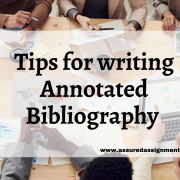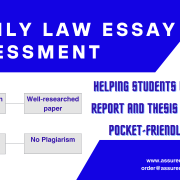Please note the guidance on essay writing and on plagiarism in the MCC Handbook and on the Keele University website.
Late submissions, without formally agreed extensions and up to a week following the deadline, will receive a maximum pass mark of 40. After a week, any work presented for assessment will be recorded as a non-submission. Please note: extensions cannot be provided by individual module tutors and are only available for medical and compassionate reasons. They may be granted by completing an exceptional circumstances form and submitting it via e-vision. Instructions on how to do this can be found here: https://www.keele.ac.uk/ec/
Visual Pleasures has two interrelated pieces of coursework.
1) A 2500 Word Critical Essay Weighted 50%
Analyse a leisure space :museum/gallery or activity of your choice, in relation to some of the key concepts, theories and debates covered on the module.
- Before you start work, please discuss your ideas with the tutor to ensure you have selected an appropriate example to focus on.
2) A Practice-based workbook, comprising a portfolio of 10 photographic images. Weighted 50%
Produce a portfolio of ten photos on the same leisure space or activity as your essay. The photographs should relate to the arguments you make in your essay and reflect the theories, concepts and debates that you have discussed.
- As with the essay, please discuss your ideas with the tutor before beginning work on your portfolio.
10 pics theme:
-time planning for visiting museums and art galleries, such as the limited number of exhibitions,
-a spatial strategy of the museum: the order in which exhibits are displayed, such as chronological order and geographical order. Exhibition space design: lighting, space, visiting aisle,
-the shop of museum and gallery: shopping at museum-postcard and tote bag…
-culture symbolism
– Strategy: the design of route from the museum entrance to exit of the museum, Locker room and parking space, toilet, restaurant, donate place,
-marketing strategy: membership and family plan
-long queue
-discourse analysis with the caption of exhibits tone (related to gender or class)
-selfie time: pseudo-events -argument: tourism=inauthentic
-family pleasure at art gallery
Guidance
Detailed guidance will be available on the KLE, but be sure to follow these general guidelines:
- Make sure your essay and workbook are interrelated
- Both pieces of coursework should focus on the same domain of leisure and advance a coherent theoretical argument
- The essay should use relevant theories to analyse the socio-political significance of leisure; the portfolio should demonstrate your capacity to convey the concepts and arguments that you advance in your essay through photography
Additional Guidance
The two pieces of coursework for this module are designed to be interrelated and it is a vital requirement that your submissions demonstrate a meaningful theoretical and contextual interconnection. This means that the essay and the workbook need to exhibit coherence in their choice of theoretical debates and approaches as well as the contextual material (the particular domain of leisure chosen for examination). For instance, if in your essay you decide to examine the issue of commodification of leisure practices with a contextual focus on the domain of heritage tourism, similar theoretical and contextual concerns should be explicitly demonstrated in your portfolio of photos. Overall, ideally, the essay and the workbook should work in conjunction to present a coherent, theoretically informed position
on the relationship between leisure and media. Various examples of how this may be successfully achieved will be demonstrated in the lecture sessions for the module. You will also have the opportunity, and are strongly encouraged, to discuss the suitability of your
essay and portfolio plans with the module tutors. Aside from this vital element of meaningful interconnections, the other characteristics of
good quality work are identified below.
For the critical essay: a thorough and wide ranging understanding of theoretical perspectives, a good level of critical analysis and an excellent ability in applying critical issues to practical examples. A strong degree of independent work which is well presented and structured with good critical apparatus, evidence of good reflective practice and showing good awareness of a spectrum of relevant textual and visual works.
For the visual project: good ability to conceive, produce and (where necessary) post-produce a piece of visual work which combines well to give expression to other assessed elements. It communicates excellently, is very well structured and shows good range of technical craft. It
is evident that there is good ability to apply understanding and awareness of theoretical and
critical understanding to visual representation with a very good grasp of communicative values, critical issues and an intended audience.











